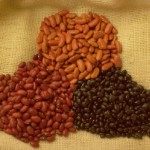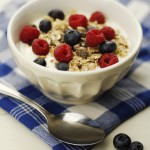 “What should I eat before I work out?”
“What should I eat before I work out?”
Eating before meals, as opposed to skipping meals has been show to improve performance. The goal of the pre-workout meal/snack is to provide fuel for your workout, guaranteeing that you’re neither hungry nor left exercising with a large quantity of undigested food in the stomach.
The best pre-workout snack will depend on a few things:
Individual Goals- weight loss, fat losses, gain strength, improve speed, etc.
Duration of Exercise- 30 minute workout versus a 3 hour workout
Intensity of Exercise- high intensity (can’t talk) vs. low intensity (can carry on a conversation)
Type of Exercise-strength versus endurance
Individual Level of Training- novice versus elite athlete
Many of my clients tell me they prefer to work out on an empty stomach. If your goal is only to burn calories or lose weight, that might actually work. But if your goal is to get faster, stronger, build muscle or perform better, it’s time to start focusing on a pre-workout nutrition plan.
To gain a performance benefit, here are some general guidelines when choosing a pre-workout snack:
-High in carbohydrates such as whole grain breads, pasta, tortillas, rice, cereals, fruits and vegetables. Eating carb-rich foods before you exercise can help supply energy, and maximize muscle glycogen stores.
-Small amount of protein.
-Keep the pre-workout meal low in fat and fiber. Meals high in fat and fiber take longer to digest, which may cause fullness and other GI (gastrointestinal issues) such as nausea, bloating, cramping and general discomfort.
-Hydrating foods are great to provide some additional fluid. Foods such as fruits, vegetables, smoothies and yogurt make good options.
When exercising in extreme conditions or for long duration, choosing salty foods will help prevent sodium depletion. Good choices are chicken broth, pickles, olives or pretzels.
Most athletes don’t like to exercise with a belly full of food, nor do I recommend it. When it comes to portion size, the closer you are to the workout, the less food you consume. The more time that’s available the more food you consume. For higher intensity workouts, be sure to leave more time for digestion. If you hit the gym before breakfast, try eating something small, such as a banana or another easily digestible carbohydrate, 30 minutes before you start. But be sure to have a balanced breakfast as soon as your workout ends. If you know your stomach can’t handle solid food before a workout, opt for a smoothie or sports drink for the added carbohydrates.
We’re all different when it comes to the types of food we tolerate before exercise and the amount of food we eat will also vary based on our individual needs. It’s important to practice pre-workout fueling until you learn what works for you.
Example of pre-workout snacks (1-2 hours before a workout):
1/2 turkey sandwich with an orange
Yogurt with a few crushed almonds & dried fruits
Cereal with milk
Toast, bagel or English muffin with nut butter and jelly
1/2 PB & J sandwich
3-4 fig Newton’s or other small low-fat granola bar
Remember that we all need different amounts of food. If you need help determining your own individual needs, consider consulting a sports dietitian. Check out http://www.scandpg.org/search-rd/ to help locate a sports dietitian near you.
Heather Mangieri is a national media spokesperson, registered dietitian and owner of Nutrition CheckUp in Pittsburgh, PA. For more information visit http://www.nutritioncheckup.com. You can follow Heather on Twitter @nutritioncheck and join her facebook community at https://www.facebook.com/NutritionCheckUp
 Subscribe
Subscribe
